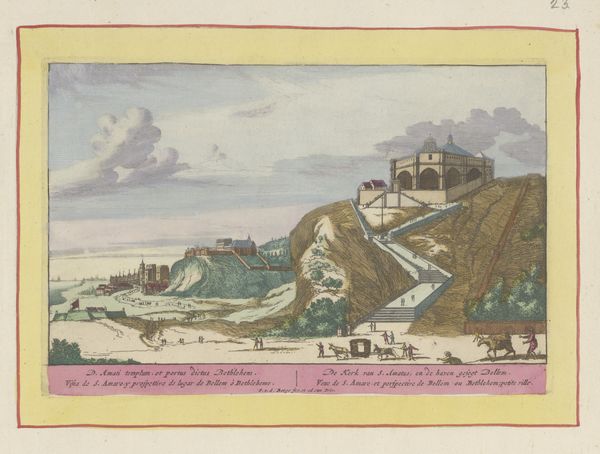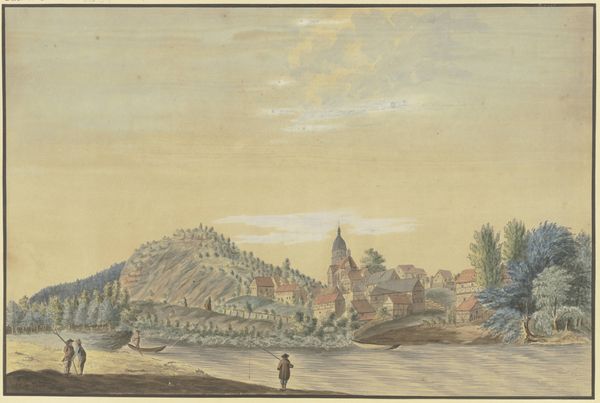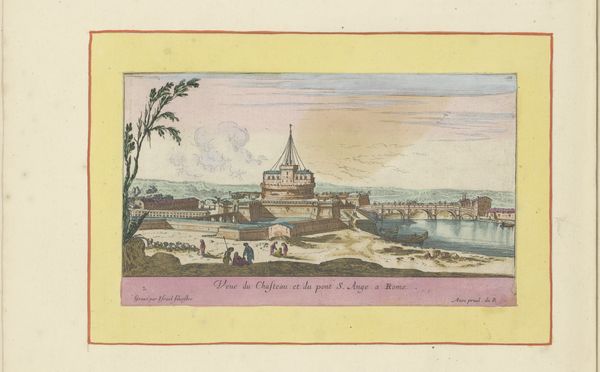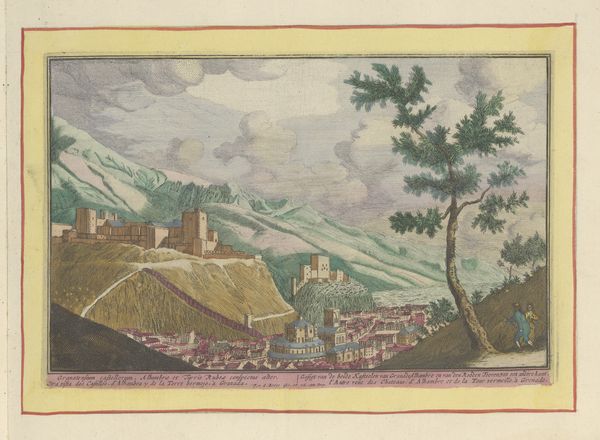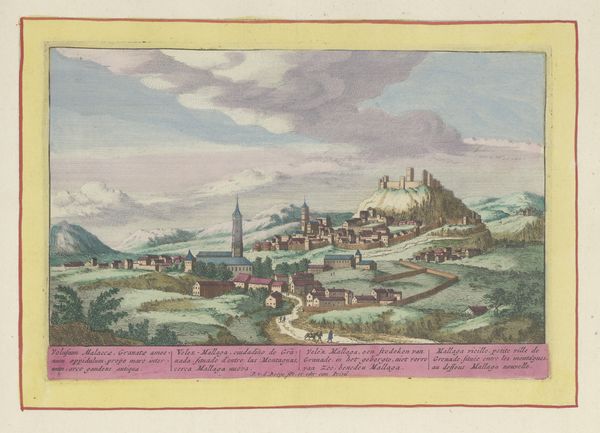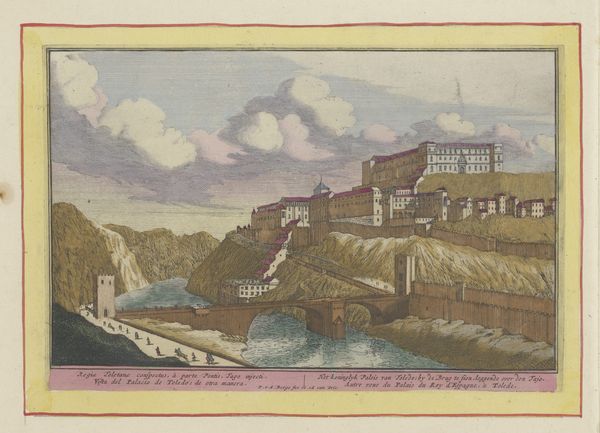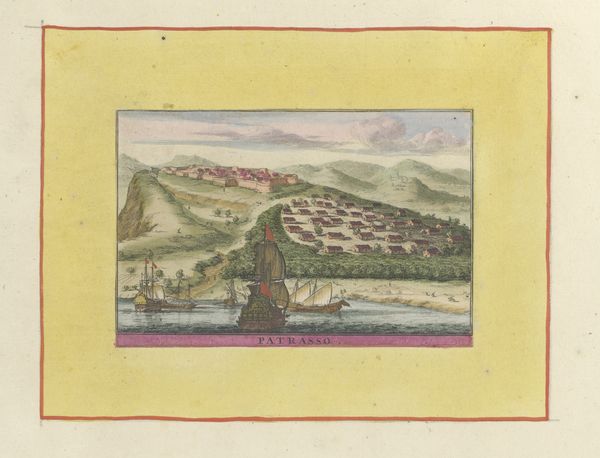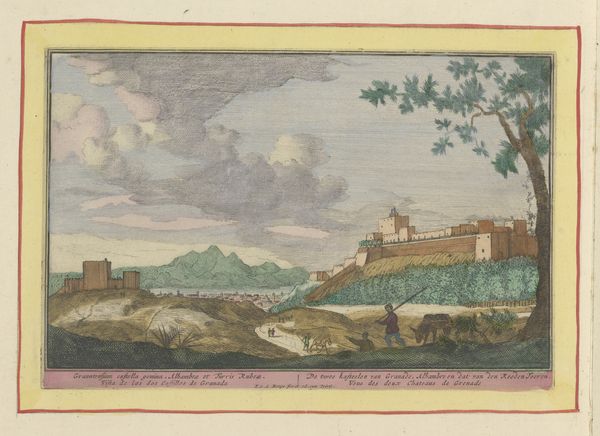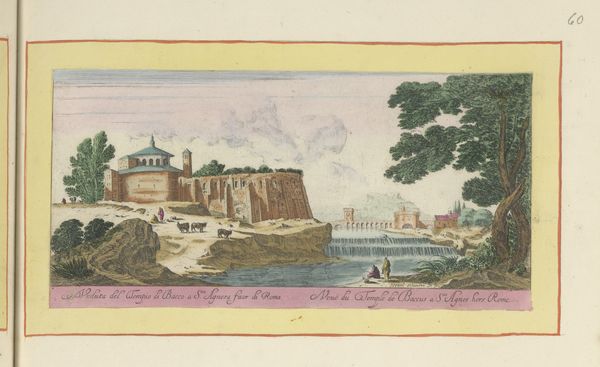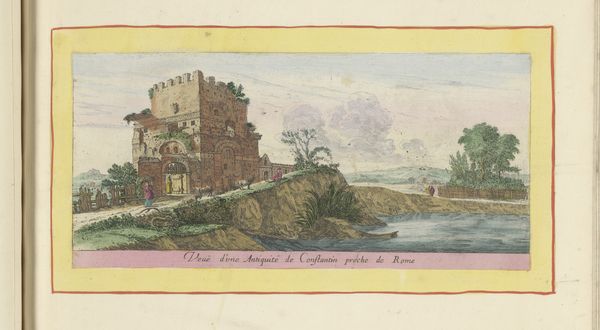
Piramide van Cestius en de San Pietro in Montorio te Rome Possibly 1631 - 1717
0:00
0:00
israelsilvestre
Rijksmuseum
drawing, etching, paper, watercolor, ink
#
drawing
#
etching
#
landscape
#
paper
#
watercolor
#
ink
#
cityscape
#
italian-renaissance
Dimensions: height 91 mm, width 155 mm
Copyright: Rijks Museum: Open Domain
Curator: Ah, look at this picturesque scene. What do you make of it? Editor: It strikes me as quite serene. There’s a sense of calm that emanates from the delicate washes of color and the horizontal composition, punctuated by the stark pyramid. Curator: This is “Piramide van Cestius en de San Pietro in Montorio te Rome,” possibly created between 1631 and 1717 by Israel Silvestre. It’s currently held at the Rijksmuseum and is rendered in ink, etching, watercolor and drawing on paper. The artist juxtaposes the ancient and the contemporary, creating a unique visual dialogue. What associations do you perceive with the Cestius Pyramid, appearing somewhat alien within this Italian landscape? Editor: Well, pyramids often evoke notions of the afterlife and hidden knowledge. Silvestre is placing a non-Roman signifier—a cultural symbol of power and transcendence from ancient Egypt—right within the heart of the Eternal City. It adds a layer of temporal depth, hinting at the layers of history and cultural exchange embedded in Rome’s identity. And the way it looms next to what looks like an amphitheater? Curator: The positioning of the Pyramid against the cityscape, yes, creates an evocative dialogue between death and resurrection. Its enduring presence symbolizes power, and its shape perhaps mimics upward aspirations, acting as a silent witness to the passage of time. The way the building on the hill acts to echo its triangular shape provides a symbolic visual link that speaks to transcendence, rebirth, and spiritual continuity. Editor: Agreed, and from a purely structural perspective, I admire how the delicate linework in the foreground draws the eye deeper into the vista, leading us from the tactile details of the present to the softened contours of the distance. The subdued palette is a masterstroke, unifying disparate elements. Curator: Ultimately, this piece functions as more than just a record; it's a reflection on time, memory, and the cultural palimpsest that Rome represents, don’t you think? Editor: I concur, a poignant reminder that every present moment rests upon the echoes of the past. A very interesting encounter.
Comments
No comments
Be the first to comment and join the conversation on the ultimate creative platform.
